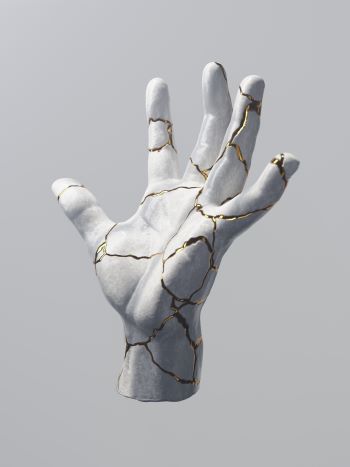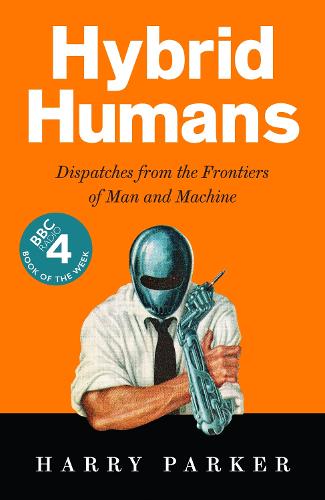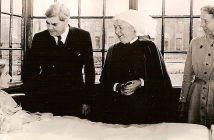Hybrid Humans is an unusual and illuminating examination of the growing interface between technology and the human body seen through the eyes of a soldier whose wounds resulted in the loss of his legs, one of them above the knee. Harry Parker, the author, was hit by the blast and shrapnel of an improvised explosive device on patrol in Afghanistan in 2009 when serving as a young captain in The Rifles.
This thoughtful and eloquent book, his second, is partly the story of his physical recovery assisted by increasingly sophisticated prosthetic technology and partly a review of the developments in technology to support the disabled. Most important of all it is about the building of a new life and a new identity, of accepting the 8 kilograms of metalware that now form 12% of his bodyweight – hence one of the reasons for the title of the book. His is a life, though, that is not just defined by injuries and this is at the emotional heart of the book and inspires its most eloquent passages.
 One of these is found in the final chapter The Golden Repair after the Japanese technique of kintsukuroi in which lacquer mixed with gold is used to repair broken pottery. Parker writes ‘the break becomes part of the history of the object, and the beauty and the time spent on the repair add to the reason the object is valued’. Kintsukuroi is an expressive metaphor for how broken human bodies, when repaired, can find a different kind of grace and an identity with a value equal to the time before they were damaged. What gives added depth to this theme is that it is not just confined to the author and his own experiences. He spends time with other disabled individuals whom he encourages to talk about their own particular challenges and how they built their lives anew. Parker is clearly an engaging interviewer as well as an acute listener.
One of these is found in the final chapter The Golden Repair after the Japanese technique of kintsukuroi in which lacquer mixed with gold is used to repair broken pottery. Parker writes ‘the break becomes part of the history of the object, and the beauty and the time spent on the repair add to the reason the object is valued’. Kintsukuroi is an expressive metaphor for how broken human bodies, when repaired, can find a different kind of grace and an identity with a value equal to the time before they were damaged. What gives added depth to this theme is that it is not just confined to the author and his own experiences. He spends time with other disabled individuals whom he encourages to talk about their own particular challenges and how they built their lives anew. Parker is clearly an engaging interviewer as well as an acute listener.
He does not hide from the brutal nature of his own injuries, how lucky he was to have survived at all and the long struggle, both mental and physical, to recover from his wounds and build a new life. The descriptions he gives of the damage inflicted on him by the bomb and of the dramatic surgery needed to save him both in Afghanistan and back in England are unsparing. One of the messages for the wider world of his survival, a message of especial relevance given the current struggles faced by the NHS, is the significance of what he describes as the ‘golden hour’. In short, the importance of treating trauma of whatever kind as close to the incident site and as quickly as possible. For Parker it began with the military paramedic who was only a few yards behind him when the bomb exploded. It then continued on the helicopter that airlifted him to the field hospital where he was taken straight into the operating theatre. He makes it clear that he was lucky to have been in Afghanistan when he received his traumatic injuries as he would not have survived them on the streets of London.
 The title of the book is a reflection not only of his own personal search for an identity that reflects his changed circumstances but also of the increasing attachment of supportive technologies to the human body. Parker is never less than a realist whether considering the potential of regenerative medicine or the engineering challenge of trying to replicate mechanically the sophisticated flexibility of so much human anatomy. As he wryly points out what cyborgs appear to be able to do in Hollywood films is not yet possible in the real world. Even with his microprocessor assisted artificial knee he can neither run nor jump.
The title of the book is a reflection not only of his own personal search for an identity that reflects his changed circumstances but also of the increasing attachment of supportive technologies to the human body. Parker is never less than a realist whether considering the potential of regenerative medicine or the engineering challenge of trying to replicate mechanically the sophisticated flexibility of so much human anatomy. As he wryly points out what cyborgs appear to be able to do in Hollywood films is not yet possible in the real world. Even with his microprocessor assisted artificial knee he can neither run nor jump.
A particular strength of the book is the broad canvas over which Parker operates. He does not just limit himself to a consideration of the mechanical advances being made that are directly relevant to his own injuries such as the development of osseointegration surgery. He also examines the possibilities of new technologies to extend cognition and create an ‘extended mind’ as well as the growing impact of artificial intelligence and its implications for human society. That said, it is the passages covering the psychological challenges involved in recovery and rebuilding that are the most powerful: coming to terms with the constant awareness of having an injured body, getting off dependency on painkillers, realising that post traumatic stress does not always have to involve the ‘D’ of disorder and can become post-traumatic growth, finding determination from the example of others even worse injured. For Parker the example of Jack, a triple-amputee, plays a significant role in his recovery.
For all the pain and trauma Parker has been through, all the lost dreams and ambitions, he is clear he would not want to go back to the person he was before he was blown up. He has built a new life, a new identity and found new dreams. He is now a husband, father, artist and writer and an exemplar of how from post-traumatic stress can come post-traumatic growth. This excellent book is a worthy reflection of that change. If you find Hybrid Humans stimulating and thought-provoking, I recommend you read Parker’s first book Anatomy of a Soldier.
Hybrid Humans: Dispatches from the Frontiers of Man and Machine is a BBC Radio 4 Book of the Week. It is out now in all good bookshops, published by Profile Books.
Kintsugi photos by Simon Lee (courtesy of Unsplash)




